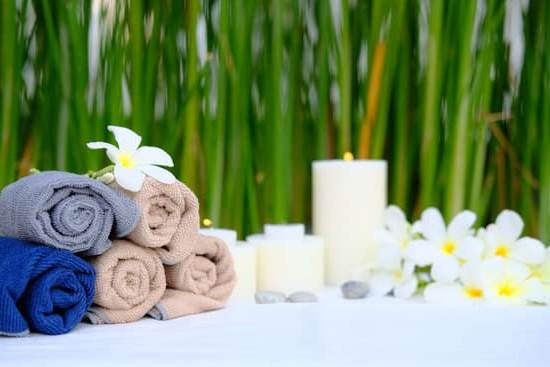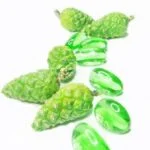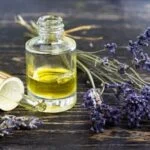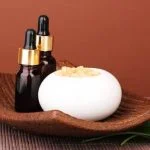Are you looking for a natural way to promote relaxation and overall well-being? Aromatherapy massage oils may be the answer.
In this comprehensive guide, we will explore the benefits and uses of aromatherapy massage oils and provide you with all the information you need to create your own customized blends at home. From essential oils and carrier oils to safety precautions and DIY recipes, this article has everything you need to know about using aromatherapy massage oils for a rejuvenating self-care experience.
Aromatherapy massage oils have long been used to promote relaxation and reduce stress. These aromatic blends not only provide physical benefits through massage, but also offer therapeutic properties that can uplift the mind and spirit. When properly blended, these oils can enhance your overall well-being, making them an invaluable addition to your self-care routine.
In the following sections, we will delve into the different types of essential oils commonly used in aromatherapy massage, as well as the importance of carrier oils in creating effective blends. We will also discuss safety precautions for using essential oils and provide you with easy-to-follow recipes for creating your own customized blends at home.
So, if you’re ready to take your self-care routine to the next level, keep reading to learn how to make your own aromatherapy massage oils.
Essential Oils for Aromatherapy
Aromatherapy has been used for centuries as a holistic healing treatment, and essential oils play a central role in this practice. Essential oils are the concentrated extracts of plants, flowers, and herbs that are known for their therapeutic properties. When used in massage oils, they can help promote relaxation, alleviate stress and anxiety, and improve overall well-being. In this section, we will explore the different types of essential oils commonly used in aromatherapy massage and their specific benefits.
Lavender Oil
Lavender oil is widely recognized for its calming and soothing properties. It is often used to promote relaxation and reduce anxiety, making it an excellent choice for aromatherapy massage oils designed to induce sleep or alleviate stress.
Peppermint Oil
Peppermint oil is known for its invigorating and refreshing scent, making it a popular choice for massage oils aimed at relieving muscle tension and fatigue. This oil can also help clear the mind and improve focus.
Chamomile Oil
Chamomile oil is prized for its gentle, calming effects. It is often used in massage blends to soothe sore muscles, reduce inflammation, and promote relaxation.
Other popular essential oils commonly used in aromatherapy massage include eucalyptus oil (known for its respiratory benefits), rosemary oil (believed to improve memory and mental clarity), and citrus oils like orange or lemon (used to uplift the mood). Each essential oil offers unique therapeutic properties that can be blended together to create customized aromatherapy massage oils tailored to individual needs.
When learning how to make your own aromatherapy massage oils, it’s important to understand the specific benefits of each essential oil as you create personalized blends that cater to your health needs and preferences. Each essential oil has different chemical compositions that impact their aroma and therapeutic properties, so experimenting with different combinations allows you to discover what works best for you.
Carrier Oils
When creating aromatherapy massage oils, carrier oils play a crucial role in diluting essential oils and delivering their benefits to the skin. These oils are derived from the fatty portions of plants such as seeds, nuts, or kernels, and they possess their own nourishing properties that can benefit the skin. It is important to choose the right carrier oil based on its texture, absorption rate, and skin-nourishing properties to create effective and safe aromatherapy massage blends.
Popular Carrier Oils for Aromatherapy Massage
There are numerous carrier oils available for creating aromatherapy massage oils, each with its own unique characteristics. Some popular options include sweet almond oil, jojoba oil, coconut oil, grapeseed oil, and apricot kernel oil.
Sweet almond oil is well-loved for its light texture and excellent emollient properties, while jojoba oil closely resembles the skin’s natural sebum and absorbs easily. On the other hand, coconut oil is known for its moisturizing abilities and grapeseed oil is valued for being non-greasy and suitable for all skin types.
Skin-Nourishing Properties of Carrier Oils
In addition to their role as a base for essential oils in aromatherapy massage blends, carrier oils also offer various skin-nourishing benefits. For instance, sweet almond oil is rich in vitamin E and has anti-inflammatory properties that can soothe irritated skin.
Jojoba oil contains vitamins B and E, as well as antioxidants that help protect the skin from environmental stressors. Coconut oil is highly moisturizing due to its high content of saturated fats and grapeseed oil is rich in omega-6 fatty acids which support skin health.
When making your own aromatherapy massage oils at home, it’s important to consider not only the therapeutic properties of essential oils but also the beneficial qualities of carrier oils. By selecting the right carrier oil based on its texture and skin-nourishing properties, you can create customized blends that provide both relaxation and holistic skincare benefits.
Understanding how to pair essential oils with suitable carriers will allow you to craft safe and effective aromatherapy massage oils tailored to your specific needs.
Safety Precautions
When creating your own aromatherapy massage oils, it is important to prioritize safety and consider potential sensitivities and contraindications associated with essential oils. Here are some essential safety tips and guidelines for using and blending essential oils for massage oils:
1. Conduct a patch test: Before using any new essential oil, it is crucial to conduct a patch test on a small area of skin to check for any adverse reactions or sensitivities. This can help prevent any potential allergic reactions or skin irritations when using the aromatherapy massage oil.
2. Understand contraindications: Certain essential oils are not suitable for individuals with certain health conditions or during pregnancy. It is important to research and understand the contraindications of specific essential oils before incorporating them into your aromatherapy massage oil blends.
3. Dilution ratios: Essential oils are highly concentrated substances and should be diluted in a carrier oil before use to minimize the risk of skin irritation or sensitization. It is recommended to follow proper dilution ratios, such as 2-3% dilution for general body massage, and even lower dilutions for sensitive individuals.
4. Storage and handling: Properly store essential oils in dark glass bottles in a cool, dark place to maintain their integrity and potency. Always handle essential oils carefully to prevent spillage or exposure to eyes, mucous membranes, or open wounds.
5. Seek professional advice: If you have any concerns about using specific essential oils, especially if you have underlying health conditions or are pregnant, consult with a qualified aromatherapist or healthcare professional for personalized advice.
By following these safety precautions and guidelines, you can enjoy the benefits of aromatherapy massage oils while minimizing the risk of adverse reactions and ensuring a safe and enjoyable experience.
Remember that proper education and caution are vital when working with essential oils to create your own aromatherapy massage oils at home.
Choosing the Right Blending Ratio
Creating your own aromatherapy massage oils at home can be a fun and rewarding experience. One of the most important factors in making effective and safe massage oils is choosing the right blending ratio of essential oils to carrier oils. The blending ratio determines the strength and effectiveness of the aromatherapy blend, as well as the safety of using essential oils on the skin. Here’s how to determine the right blending ratio for your customized aromatherapy massage oils:
Step-by-Step Guide to Determining Blending Ratios
1. Research Essential Oil Safety: Before creating your blend, it’s important to research the safety guidelines for each essential oil you plan to use. Some essential oils are more potent and require a lower blending ratio, while others are gentler and can be used in higher concentrations.
2. Consider Your Purpose: Determine the purpose of your aromatherapy massage oil blend, whether it’s for relaxation, stress relief, muscle tension relief, or another specific benefit. Different essential oils have unique therapeutic properties that can support these different purposes.
3. Start with a Low Ratio: As a general rule of thumb, it’s best to start with a low blending ratio (around 1-2%) for most essential oils, especially if you’re new to blending. This means using 1-2 drops of essential oil per ounce of carrier oil.
4. Test and Adjust: Once you’ve created your initial blend, perform a patch test on your skin to ensure there are no adverse reactions. If all is well, you can then adjust the blending ratio based on the strength and scent of the blend until you achieve your desired result.
By following these simple steps and taking into consideration safety guidelines and therapeutic properties of essential oils, you can create customized aromatherapy massage oil blends that are both effective and safe for personal use.
DIY Aromatherapy Massage Oil Recipes
Aromatherapy massage oils are a fantastic way to promote relaxation and overall well-being. These oils are known for their therapeutic properties and beneficial effects on both the mind and body.
Making your own aromatherapy massage oils at home is not only cost-effective but also allows you to customize blends according to your specific needs and preferences. In this section, we will discuss how to make your own aromatherapy massage oils, including easy-to-follow recipes for relaxation, stress relief, and muscle tension relief blends.
When making your own aromatherapy massage oils, it is essential to start with high-quality essential oils. Lavender, chamomile, and geranium are excellent choices for relaxation blends, while peppermint, eucalyptus, and lemongrass can be used for stress relief or muscle tension relief. These essential oils can be combined with carrier oils such as almond oil, coconut oil, or jojoba oil to create effective and fragrant massage blends.
For a basic relaxation blend, combine 5 drops of lavender essential oil with 2 drops of chamomile essential oil in 30ml of carrier oil. This soothing blend can be used for a calming full-body massage or added to bath water for a luxurious and aromatic soak. For stress relief or muscle tension relief blends, consider using peppermint or eucalyptus essential oil as the primary component in combination with other complementary oils like frankincense or rosemary.
Experimenting with different essential oil combinations and blending ratios is key to creating the perfect aromatherapy massage oil that suits your individual needs. It’s important to follow recommended dilution guidelines when using essential oils in massage blends to ensure safety and effectiveness. With some practice and creativity, you’ll be able to craft personalized aromatherapy massage oils that cater to your desired outcomes for relaxation and self-care.
| Essential Oil Blend | Ingredients | Usage |
|---|---|---|
| Relaxation Blend | Lavender Essential Oil + Chamomile Essential Oil + Carrier Oil (Almond/Coconut/Jojoba) | Body Massage/Bath Soak |
| Stress Relief Blend | Peppermint Essential Oil + Eucalyptus Essential Oil + Frankincense Essential Oil + Carrier Oil (Almond/Coconut/Jojoba) | Targeted Massage on Stress Points/Muscles |
By following these simple DIY recipes for creating your own aromatherapy massage oils at home, you can experience the benefits of natural healing through the power of scent and touch. Whether you’re looking to unwind after a long day or ease tense muscles from physical activity, incorporating aromatherapy into your self-care routine can enhance your overall well-being in a gentle yet profound way.
Regardless of the specific blend you choose to create based on your needs of rest; stress; etc. you will surely enjoy all the advantages associated with these wonderful practices.
Application and Usage
Aromatherapy massage oils can be a wonderful addition to your self-care routine, offering a variety of benefits for relaxation and overall well-being. When it comes to using these oils effectively, there are several tips and techniques that can enhance the experience and promote a sense of calm and balance. In addition to traditional massage techniques, aromatherapy massage oils can also be used in other ways to support relaxation and self-care.
One effective way to use aromatherapy massage oils is through the practice of self-massage. This involves applying the oil directly to your skin and using gentle pressure and circular motions to massage the oil into your muscles. Not only does this help to release tension and promote relaxation, but it also allows you to take a moment for yourself and connect with your body.
In addition to self-massage, aromatherapy massage oils can also be used in various relaxation practices such as meditation and yoga. Whether applied directly to the skin or diffused in the air, the soothing aroma of these oils can enhance the overall experience and create a calming atmosphere. This makes them ideal for creating a peaceful environment for personal relaxation practices or setting the mood for mindfulness activities.
| Aromatherapy Massage Oils Usage | Benefits |
|---|---|
| Self-massage | Release tension, connect with body |
| Meditation & Yoga | Create a calming atmosphere, enhance experience |
Final Thoughts and Tips
In conclusion, creating your own aromatherapy massage oils can be a rewarding and empowering experience, allowing you to customize the scents and therapeutic properties to suit your individual needs. By understanding the benefits of essential oils and carrier oils, as well as the importance of safety precautions and blending ratios, you can create personalized blends that promote relaxation, stress relief, and muscle tension relief.
With a wide range of DIY aromatherapy massage oil recipes available, you have the flexibility to experiment and find the perfect blend for your self-care routine.
When venturing into the world of aromatherapy massage oils, it’s important to remember that each person’s sensitivity and preference may vary. It’s crucial to test patch any new blend on a small area of skin before full use to ensure there are no adverse reactions. Additionally, always store your homemade massage oils in dark glass bottles in a cool dark place to prevent degradation from light or heat exposure.
In closing, by taking the time to learn how to make your own aromatherapy massage oils, you can elevate your self-care routine while experiencing the therapeutic benefits of essential oils firsthand. Whether you are looking for relaxation after a long day or seeking relief from muscle tension, creating custom blends allows you to tailor your aromatherapy experience to fit your specific needs.
So why not embark on this journey into DIY aromatherapy massage oils? Your mind and body will thank you for it.
Frequently Asked Questions
Which Oil Is Best for Aromatherapy Massage?
The best oil for aromatherapy massage is typically carrier oils such as sweet almond, jojoba, or coconut oil. These oils have small molecules that easily penetrate the skin and are gentle enough for most individuals.
How Do You Make Aromatherapy Essential Oils?
Aromatherapy essential oils can be made through a process called distillation, which involves steaming or heating plant materials to extract their aromatic compounds. This process requires careful attention to detail and specific equipment to ensure the purity of the oils.
What Do You Mix Essential Oils With for Massage?
Essential oils are commonly mixed with carrier oils, such as sweet almond or coconut oil, for use in massages. These carrier oils help dilute the potent essential oils, making them safe for direct application to the skin and allowing for a more even distribution during massages.

Are you looking for a natural way to improve your health and wellbeing?
If so, aromatherapy may be the answer for you.





